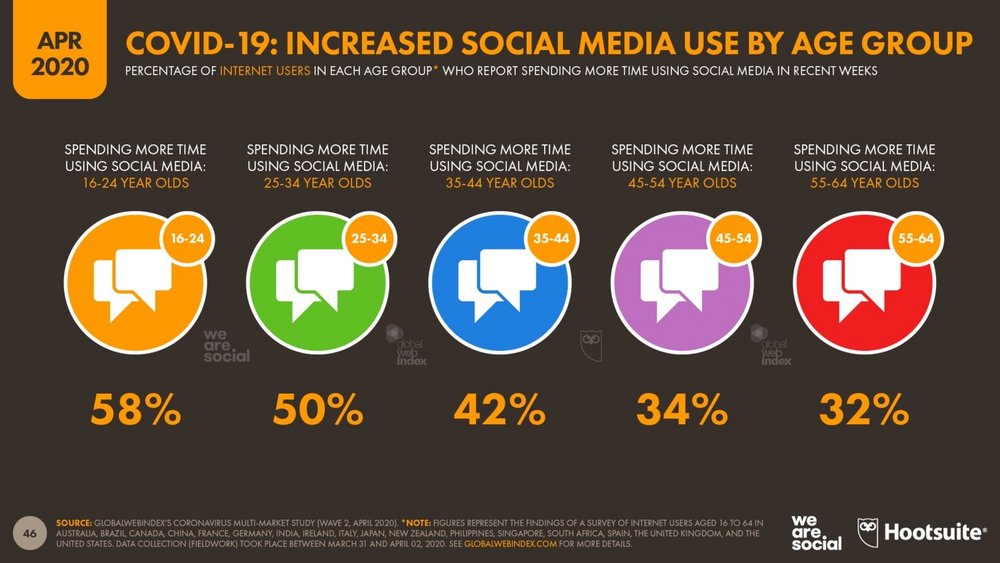Break up with social media? Brands have too much to lose. /
In May Forrester released a provocative report claiming brands on social media are unwelcome interlopers that prop-up unsafe platforms, and telling them to be unafraid to walk away.
But giving up their voice on social media means brands giving up customers and advocates, argues Nathan McDonald, co-founder and group CEO at We Are Social. Rather than walk away, brands should pull it closer to the heart of their ambitions.
Contagious Contributor
/
Break up with social media? Avoid Stockholm Syndrome? The snappy soundbites announcing Forrester Research’s latest vision report were eye-catching but ultimately misguided, and missing a larger – and more fundamental – point.
Smart brands know they need to earn the right to be part of the conversation in social media. They also know that it’s far too important to be left out: as Forrester correctly points out, social is relevant across all stages of the customer lifecycle. By breaking up with social you’re saying goodbye to customers, and potentially brand advocates.
Bad marketing is not restricted to social media platforms, and while some brands may behave like ‘party crashers’, most are polite and respectful guests, adding value to the community with entertainment, humour or useful information. At least, that’s how we advise our clients. Social media platforms are mature enough now for most people to understand that they are also businesses that are supported by advertising. Brands have a valid role to play in this ecosystem.
Nathan McDonald, We Are Social
Not so long ago many brands looked at social from an execution point of view, focusing on building and maintaining a presence on specific channels and platforms. Now, increasingly, they are putting social thinking at the heart of their purpose and ambition as a business.
Far from being trapped by social, brands are designing social features into their products and services. They are learning to behave more socially, talking less about themselves and considering their communities in a more holistic way. Consumers do lead the conversation on social, so far better to be a part of it than run away from it.
While I don’t agree that insights gained from social are ‘more important’ than social content, as Forrester suggests, they are incredibly valuable to our clients, and indeed to our creative process. Rich insights from social should guide an overall marketing strategy, going beyond simply giving direction to social media tactics.
Great content is equally as crucial, and while it takes more effort to do than throwing out the occasional Facebook post, it’s worth the investment. There are ample examples of great advertiser social content.
Sometimes cultural relevance can elevate the most simple of content, such as the (now famous) ‘dunk in the dark’ Super Bowl tweet from Oreo. The investment here was in the level of preparation – and trust. More recently, we worked on a campaign with Ikea to mark the International Day Against Homophobia, Transphobia and Biphobia. At its heart was the concept of home and how it’s as much about a feeling of safety as a physical space. It invited people to #BeSomeonesHome by creating safe spaces for people in the LGBT+ community who are struggling to be accepted in the places they were locked down.
And look at the traction that WWF gained with GenZ-ers all over the world with Fortnite’s first eco-friendly challenge – #NoBuildChallenge. The challenge forbade players from using any natural resources to help them survive to replicate the damage that is being inflicted upon the planet and to give gamers a taste of a world without natural life. It quickly became the most talked-about topic among gamers on YouTube, where it has had 12 million views to date.
From a purely practical point of view, the appetite for social content has soared during the COVID-19 pandemic. People are spending more time online, browsing and yes, even buying. GlobalWebIndex data from our Digital 2020: April Statshot shows that more than half of internet users aged 25-34 say they have spent more time shopping online in recent weeks. It would be remiss for brands not to be where their consumers are spending time.

The key take out from Forrester’s report should be the importance of using social better, not less. With budgets currently under greater pressure than ever, there is also opportunity to be had for those not already doing so to experiment with social for brand-building.
Make no mistake: social content and authentic participation in social are powerful ways to build engagement and trust, which will be a critical survival factor for many brands in the coming months.
Contagious analyses and investigates the best commercial creativity from around the world, and reports vital trends just as they are about to crest. Find out more about membership, here.
Want more of the same? /
We don’t just write about best-in-class campaigns, interviews and trends. Our Members also receive access to briefings, online training, webinars, live events and much more.







